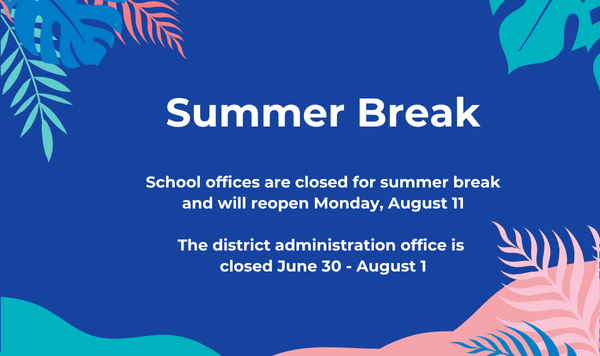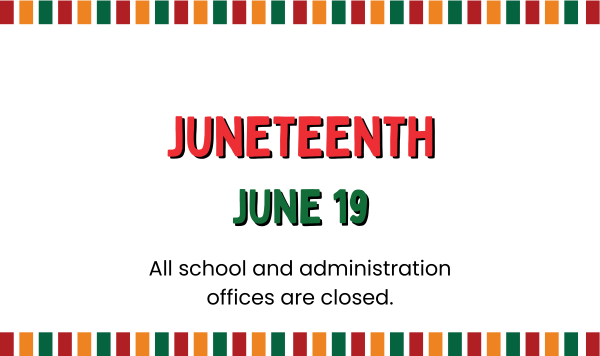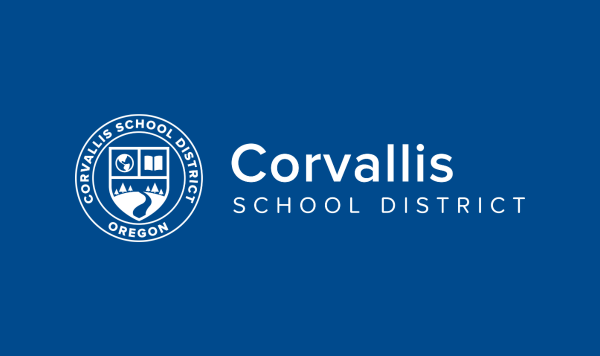Important News
Corvallis School District closed for summer break
Superintendent’s 2019-20 Budget Message
Shared with the Budget Committee at the May 2, 2019 meeting
I am pleased to present the proposed budget for the Corvallis School District for the 2019-20 fiscal year. I am honored to serve you and the community of Corvallis in my fourth year as superintendent and I believe this budget reflects the vision and goals of the district and directs resources where needed most to create new possibilities, with a focus on equity, for our students and community.
This year, for the first time, we are incorporating a Strategic Financial Plan in our budget document.
- The first edition of the district’s Multi-Year Strategic Financial Plan was released in December and is a product of our work toward implementing the Government Finance Officers Association’s Best Practices in School Budgeting.
- These best practices provide a framework that will enhance our budget and planning process through better alignment of resources with our student achievement goals.
This budget proposal includes a total investment of $349,507,711 represented by 11 separate funds, the largest of which are the General Fund and Capital Improvement Fund.
- The total budget for all funds is a $9,515,981 (or 2.8%) increase over the 2018-19 budget.
- This budget proposal includes ongoing allocations for strategic investments and some new allocations to support the district’s instructional priorities while recognizing the financial challenges that the State of Oregon faces with adequately funding public schools.
The proposed budget for the General Fund totals $96.8 million and is based on an $8.97 billion State School Fund budget with 49% allocated in 2019-20 (the first year of the biennium).
- General Fund operating revenues are budgeted to increase by 7% compared to this year, but will be outpaced by an 11% growth in operating expenditures. The primary driver behind the growth in operating expenditures is our Public Employee Retirement System (PERS) obligation.
- As outlined in board policy, all General Fund contingency and reserve accounts are budgeted at the required levels.
- To offset the projected operating deficit, this budget proposal acknowledges the use of excess reserve funds, including the targeted reserve designated to alleviate the impact of increased PERS employer contribution rates.
The annual proposed budget is the district’s plan for the upcoming school year. At the same time, the annual budget is part of long-term investments in the educational experiences our students receive.
- It is important to think about our budget as a year in time, and a thirteenth of the educational opportunities we provide our students.
- To meet the needs of all students we must continually assess our priorities and how we are allocating district resources.
- The district must invest in evidence-based practices.
- New investments must be determined to address barriers to student success, be allocated where needed the most and spent in a new way.
Some of the new strategic investments in this proposed budget include enhancing programs that support student social and emotional learning; advancing racial equity, workforce diversity and inclusive practices; rethinking the school library to improve information literacy; taking action on sustainability; and building and renovating school facilities that transform teaching and learning.
Social and emotional learning investments acknowledge the critical role of positive relationships and emotional connections in the learning process.
- These programs help students develop a range of skills they need for school and life including the ability to set and achieve positive goals, feel and show empathy for others, establish and maintain positive relationships, make responsible decisions, and understand and manage emotions.
- The proposed budget includes funds to expand existing multi-tiered, school-based staffing models to support student social and emotional learning. This includes the addition of a mental health coordinator to support district-wide programming, mental health therapists, and skills trainers to work with students at our elementary schools.
- The proposed budget also includes funds to provide staff with professional development focused on social and emotional learning strategies.
Next year we will build on the early foundations and professional learning accomplished in recent years and focus on the next evolution of our racial equity work.
- After months of honest and consciousness-raising conversations with parents, teachers, administrators, and community leaders, it is clear we need to identify and implement a next chapter of evidence-based strategies aimed at raising outcomes for historically underserved students.
- The proposed budget includes funds to increase equity leadership development in partnership with culturally specific organizations and other stakeholders in order to advance our work to remove systemic barriers and advance racial equity, diversity, and inclusion in our schools.
- The proposed budget also includes funds to expand our strategic recruitment strategies to establish a better and more consistent pipeline to increase the racial and cultural diversity of our teaching staff and provide staff with professional development focused on race and culturally relevant instruction.
One of the five school board goals is creating new opportunities for real world learning. Over the past three years, there has been an ongoing conversation on the importance of school libraries and what they can become.
- I see our school libraries as a place where we can provide our students with relevancy and opportunities for real world learning. From maker spaces to verifying sources are valid and reliable, school libraries have an important role in our schools.
- The proposed budget includes funds to increase the level of school-based library staffing at our elementary schools to expand real world learning.
Last year, the district began the process of developing a plan that supports the institutionalization of sustainability into district policies, practices and procedures.
- The four main action areas of the plan are energy and water; facilities; food and waste; and transportation. Once the plan is finalized, a framework will be in place to help us make progress towards sustainability goals that build on our existing efforts, support student learning outcomes, involve the greater Corvallis community, and demonstrate good stewardship of the environment.
- The proposed budget includes funds for the addition of a sustainability coordinator to implement the district’s Sustainability Management Plan with actionable and measurable annual goals. This plan will include increasing student engagement and integrating sustainability into educational models throughout the district.
Ensuring that excellence in learning is realized by all students, both today and tomorrow, Corvallis voters approved the issuance of $199.9 million in general obligation bonds last year to finance capital improvements at all schools. The successful passage of the 2018 bond will help us make sound investments, solve long-term challenges, and eventually transform an aging infrastructure to offer more innovative and equitable opportunities for all students.
- The primary goal of the bond program is to support future generations by building and renovating school facilities that foster best practices for teaching and learning, inspire our students to achieve their educational goals, exceed community expectations, sustain our resources, and enhance our community.
The district’s long-term projections are designed to provide the fullest picture of the district’s financial future so that decision making today can support high quality and innovative educational programs tomorrow. There are factors that remain in our control and those that do not, such as state school funding levels and future employer contribution rates for the state Public Employee Retirement System (PERS). These are “moving targets” and substantial challenges as we are making decisions for future years without currently knowing all the answers.
- While the district’s operating revenues are projected to increase over the next few years, the increase will not be enough to support projected expenditures, resulting in operating deficits that the district will need to address.
- Reserves alone will not be enough to cover the anticipated gap between resources and expenditures in future years.
- While continuing to advocate for a more stable and sufficient funding model from the state, we must continue to close the gap for students navigating poverty, students with disabilities, emerging bilingual students, and students of color.
- Our students are present in our schools today, ready to learn. We recognize that we will have to be creative in shifting the allocation of resources and spending funds differently in order to continue investments in programs that support our priorities.
I want to thank our staff for the significant time and effort they put into preparing this proposed budget. This proposal represents the work of the entire team of building principals and department and program managers who have studied and implemented the process of strategic budgeting and labored as a team to propose a budget based on our district’s goals and instructional priorities.
I would also like to thank members of the budget committee for their service, support, thoughtful analysis, dialogue and consideration of this proposed budget.
Ryan Noss
Superintendent


